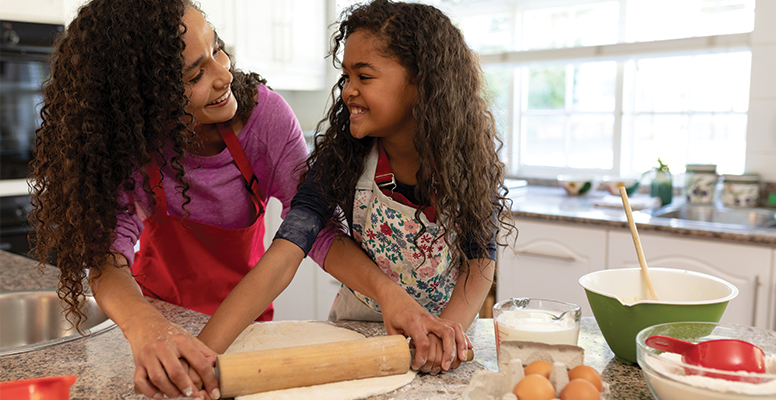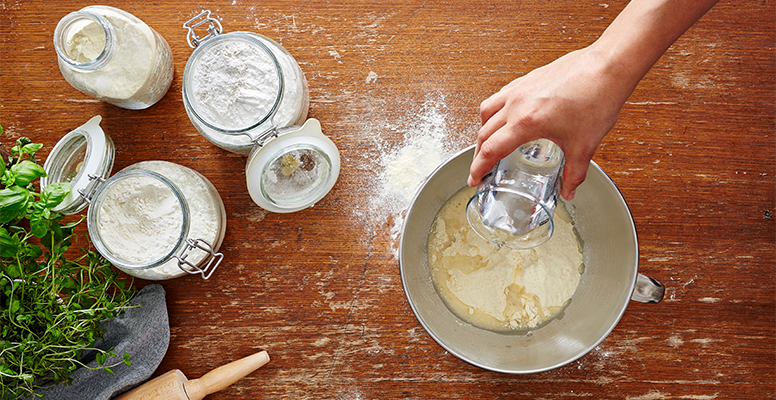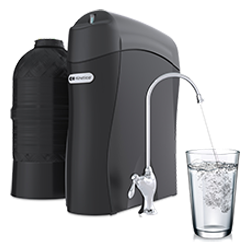Cooking With Filtered Water
Learn what effect your water quality can have on your cooking and baking.
Why Should You Cook With Filtered Water?

When it comes to drinking water, the benefits of safe, contaminant-free water are clear. But what about the water you use for cooking and baking? Many homeowners overlook this area, yet the water you cook with matters just as much as the water you drink - and in some ways, it can make an even greater difference in your everyday life.
Why Cooking Water Quality Matters
Water is a key ingredient in countless recipes. From boiling pasta to baking bread, preparing soups, sauces, and even coffee, water often makes up a large portion of what you eat and drink. If your water carries unwanted contaminants, minerals, or unpleasant tastes, those qualities can carry over into your meals.
Common Water Quality Concerns in the Kitchen
- Hard Water (Calcium & Magnesium): Can interfere with how ingredients mix and cause scale buildup on pots, pans, and kettles.
- Chlorine (Municipal Water): While important for disinfection, chlorine can give food and drinks a noticeable chemical taste and smell.
- Iron (Well Water): May leave water discolored, give food a metallic aftertaste, and even stain cookware or kitchen sinks.
- Other Contaminants: Depending on your source, everything from nitrates to microplastics can find their way into your kitchen water.
The Added Benefits of Using Filtered Water in Cooking
- Better Taste and Aroma: Soups, sauces, teas, and coffees made with filtered water taste fresher and more vibrant.
- Improved Baking Results: Yeast-based recipes, like bread, often perform better without the interference of chlorine or excess minerals.
- Cleaner Kitchenware: Reduced spotting and staining on dishes, glassware, and cookware.
- Peace of Mind: Knowing you’re reducing exposure to unnecessary contaminants, not just for drinking but for your entire family’s meals.
Learn About What Contaminants
Could Be Affecting Your Water
Contact A Kinetico Water Expert Today
Fill out your information below and we’ll have one of our authorized, independent Kinetico dealers contact you to schedule your free in-home water test.
Better Cooking and Baking
Cooking is an art composed of textures, flavors, colors, and more. Every component in a recipe can affect the outcome. If water is added and it contains contaminants, it can affect the food’s taste, consistency, texture and appearance. Colors, tastes, and odors from contaminants in water can alter the true flavor of the ingredients. Image what ‘rusty’ water, metallic-tasting water, or rotten egg-smelling water will do when used as an ingredient. Just as hard water or water with contaminants will affect the taste and appearance of coffee or tea, the water used in recipes will affect your cooking results.

Baking is an art as well, but it is also a science. Baking requires precise measurements and quality ingredients to get the expected outcome consistently. Water in baking recipes bonds the ingredients together on a molecular level, forms gluten to create textures, distributes salt and sweeteners throughout the batter or dough, and activates yeast. The dissolved minerals that make water hard can also impact the way water reacts and interacts with the molecular bonds. Some minerals affect the way gluten structures are formed in your bread, possibly making a dough that is tough and rubbery. Contaminants can also affect the water’s pH making it either too acidic or too basic which will hinder the performance of the yeast or other leavening agents in the recipe. Since water is an added ingredient in many recipes, it is important to use quality water to get the most out of the other ingredients, to get the expected results from your techniques, and that the time spent baking produces the best outcome.
Ready To Experience The Difference In Cooking With Filtered Water?
Solutions For Your Home’s Water
If you are experiencing troubles with your water or seeing signs of hard water or different contaminants in water, get your water tested. Once you know more about your water’s quality, its hardness level and what contaminants, if any, are in your water, you will be on the right path to discovering the water treatment system that is right for your home.
 One solution to make your drinking, cooking, and baking water the best it can be is a point-of-use reverse osmosis drinking water system, like the Kinetico K5 Drinking Water Station®. A reverse osmosis system uses water pressure to push the water through a semi-permeable membrane. The water molecules pass through the membrane but contaminants in the water are left behind and flushed to drain. With a K5 Drinking Water Station, you can be confident you are significantly reducing contaminants that could be in your water and that you will have an unlimited supply of pure, filtered water for drinking and for all your recipes.
One solution to make your drinking, cooking, and baking water the best it can be is a point-of-use reverse osmosis drinking water system, like the Kinetico K5 Drinking Water Station®. A reverse osmosis system uses water pressure to push the water through a semi-permeable membrane. The water molecules pass through the membrane but contaminants in the water are left behind and flushed to drain. With a K5 Drinking Water Station, you can be confident you are significantly reducing contaminants that could be in your water and that you will have an unlimited supply of pure, filtered water for drinking and for all your recipes.
If you are dealing with hard water, install a water softener to soften the water before it is further refined with a reverse osmosis system. A water softener uses an ion exchange process that replaces hard calcium and magnesium ions with sodium ions, making the water soft. A water softener will soften all the water in your home, but many also elect to install an additional water treatment system, like the K5 Drinking Water Station, to produce high-quality water for specific uses like cooking, baking, and drinking.
See the difference high-quality water can make in your amazing recipes. Schedule a Free Water Test with your local Kinetico Dealer, and take the first step to quality water.
Schedule A Free Water Test Today To Experience The Kinetico Difference
